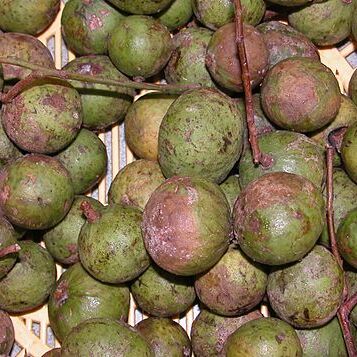Trees. Leaves imparipinnately compound; leaflets entire, rarely serrulate. Inflorescence paniculate, axillary or subterminal. Flowers 5-merous, bisexual, pedicellate. Stamens 10, equal to petals in length; filaments linear-subulate. Disk dish-shaped, ± lobed. Ovary 5-locular, locules 1-ovulate; styles 5, joined in upper part. Drupe subglobose; mesocarp fleshy; endocarp pentagonous and slightly compressed in cross section, resembling a face, 5-locular. Seed elliptic, 3-ribbed.

